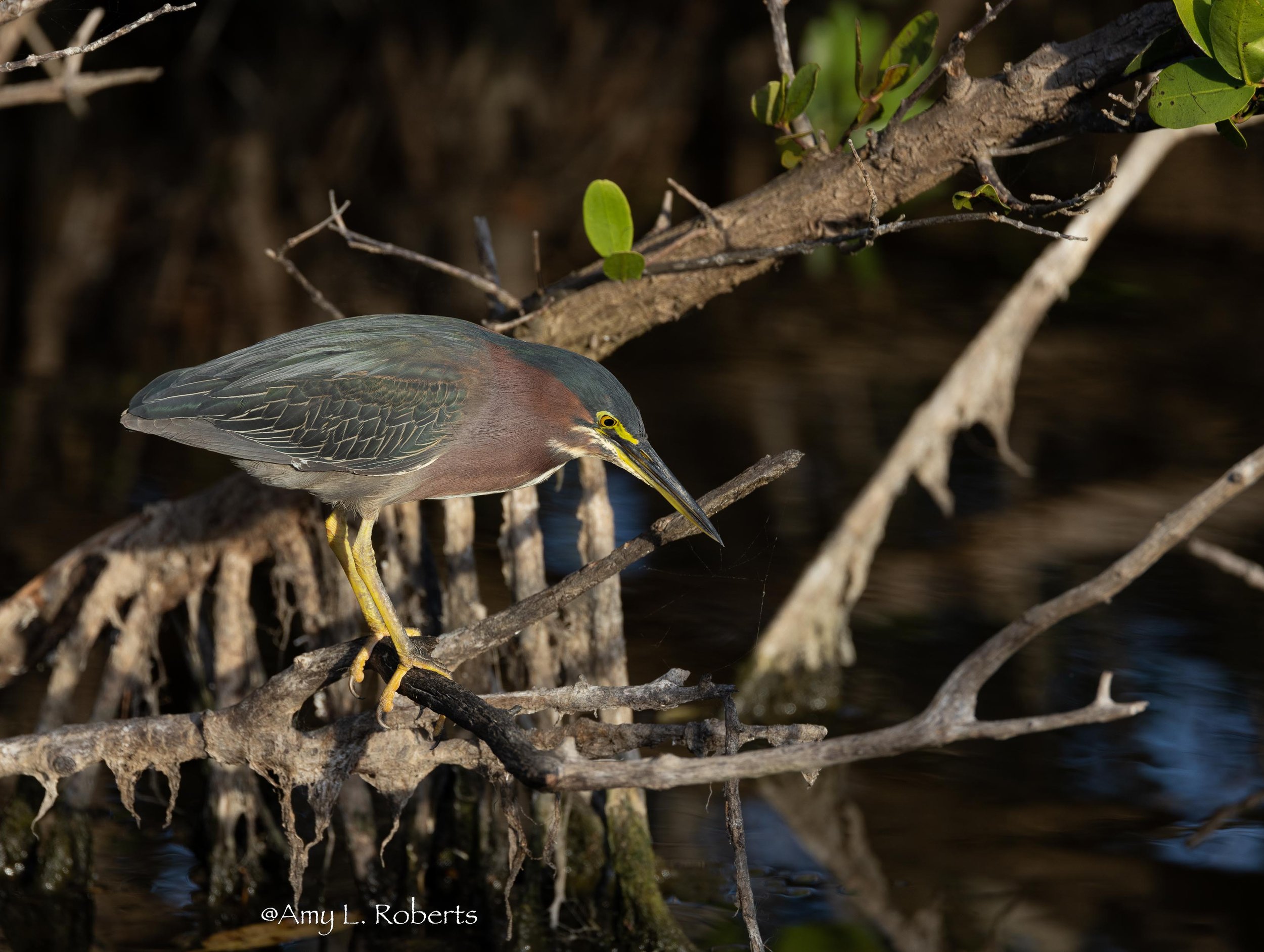Merritt Island Wildlife Refuge
Literally, thousands of birds.
Overview: Merritt Island National Wildlife Refuge is a bird photographer’s dream. The refuge was established in the early 1960s for the protection of migratory birds and the 140,000 acres of coastal dunes, saltwater marshes, managed impoundments, scrub, pine flatwoods, and hardwood hammocks provide rich habitat for over 300 permanent and migratory birds. In February, literally thousands of birds were visible from Black Point Wildlife Drive and many were at close range for optimal photography opportunities.
Juvenile Pied-Billed Grebe nesting down for the night?
Black Point Wildlife Drive: This seven-mile, one way, loop road winds through a populated section of the wildlife refuge. At the start of the drive, pay the $10 per car and pick up a brochure that identifies several stops along the way. Common Gallinule, American Coots, Little Blue Herons, Tricolor Heron, Reddish Egret, Great Blue Herons, Green Herons, American Avocet, and Snowy and Great Egrets were easily visible in the marshes and mangrove trees. Where the drive runs along larger open tracts of water, we saw thousands of waterfowl include Blue Wing Teals, American Pintail, Northern Shoveler, and Ringed Necked ducks, Gadwall, Pied-billed Grebe, Scaup, and Green Wing Teals. Among the waterfowls were herons, egrets, Roseate Spoonbills, Glossy Ibis, White Ibis, Anhinga, White Pelicans, and wide array of scores of shorebirds. We saw many alligators, a pair of great horned owls and even a wild pig too!
Little and big Roseate Spoonbills!
Bird Photography: The great part of wildlife drive is that you can bird and take photos from your car window and in some cases, where the birds are very close, that is likely the best way to capture the birds. However, pulling over to the side, quietly exiting your car with your zoom lens and tripod is ideal. As with many refuges, the birds are relatively tolerant of people, especially those who move slowly and quietly and patiently. While we concentrated our efforts along the wildlife drive, do stop by the visitor’s center and walk the boardwalk (where there are Painted Buntings!), check out the Scrub Jay nesting areas, and drive along the peaceful Bio Lab Road if time allows.
Side Trips: If you go to Merritt Island Wildlife Refuge, don’t miss Cape Canaveral National Seashore. This is hands down one of the most beautiful stretches of Atlantic seashore. Serene and undeveloped and 24 miles long, it is worth the $20 entry fee, which is good for 7 days. (Beware of the nude sections if that is not your thing)
Greenie hunting in the marsh
Another intriguing place to see is the Ritch Grissom Wetlands in Melbourne. While usually this wetland is open to driving, it was not during our visit. So, we walked the 3 miles around all the “cells”. Now, while this place is not on the level of Merritt Island when it comes to volume of birds, it is home to many nesting wading birds and there is a large rookery island filled with nests. You need a rather long zoom lens to get great pictures in this rookery, but even without that, you can also just spend some time practicing your flight photography as the birds fly in and out of the rookery – include herons and spoonbills. During our time at this lovely wetlands, and aside from the rookery filled with wading bird nests and some chicks - we also saw Limpkins, a Glossy Ibis fighting down a red snake, Red Shouldered Hawks, and even a Painted Bunting!.....
More information: https://www.fws.gov/refuge/merritt-island
I love birding in Florida! It is as close to heaven as it gets.
Loved seeing this Great Blue Heron finding a resting place as the sunset.
We have never see so many Tricolor Herons anywhere. Tri and Tri again.





